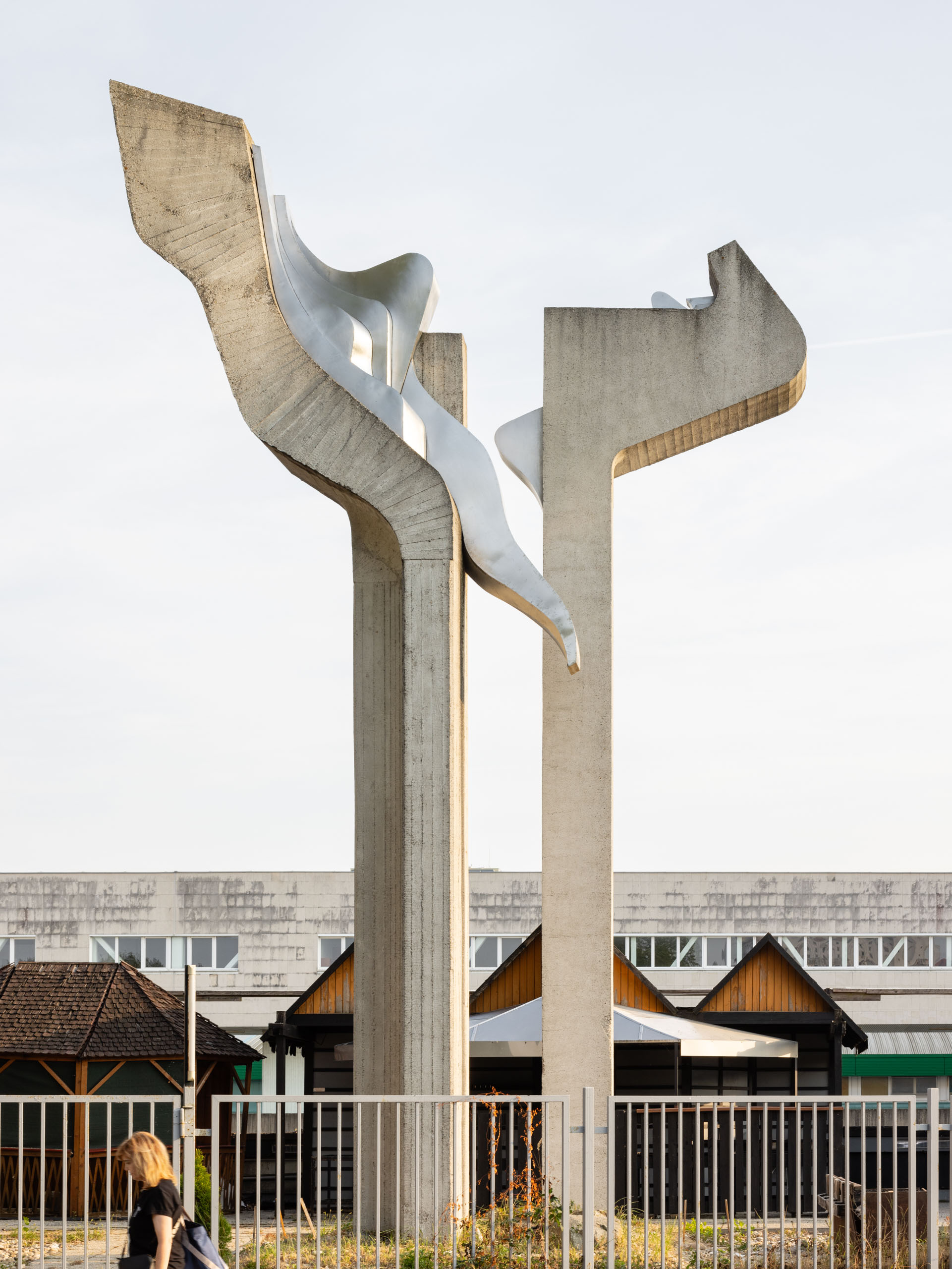The extensive renovation of Janko Kráľ Park, designed and implemented between 1977 and 1983 by the leading landscape architect Alfonz Torma (1934–2013), included the installation of a monumental fountain in the park’s southeast corner. The circular space surrounding the fountain connects thematically with twelve rest places with the same circular layout distributed throughout the park. Most of the sculptures installed during the renovation were created by Rastislav Ján Miklánek, who was also initially commissioned to design the fountain. Due to the scope of work and shortage of time, R. J. Miklánek approached his colleague, the lesser-known sculptor and designer Ambróz Balážik (1949), a graduate of the Department of Industrial Product Design headed by Václav Kautman Sr.
R. J. Miklánek and A. Balážik had collaborated on several works since the second half of the 1970s. However, it was A. Torma who significantly influenced design of the fountain, for example requesting that the author create a cascading relief surface for the basin and setting the shape of the fountain by defining the floor plan of the rest area.
The fountain is sited within a circular rest area that is bordered by a low concrete wall with a long wooden bench that partially includes a backrest. The entire rest area is paved with travertine slabs. The fountain, its round basin surrounded by a low plinth with a wide stone-clad parapet, stands at the area’s centre. Its focal motif is three highly geometrically stylised drinking doves concentrically arranged around the perimeter of a chalice-shaped vessel towards which they face and from which they drink. At the centre of the vessel is a nozzle from which water used to spray to a height of five metres.
The monumental doves, uniform in shape and size, are highly stylised, abstracted into symbols, and captured in dynamic motion with their heads tilted backwards. Together with the vessel, they stand in the middle of the shallow pool. A white concrete relief on the pool floor depicts concentrically arranged decorative abstracted theriomorphic and floral motifs that create shallow cascades over which water flows. There are also round holes around the perimeter of the basin designed for additional nozzles.
The fountain design, with its centrally composed element and nozzle, represents the traditional style of decorative fountain that can be found in various forms across Bratislava (including several fountains by P. Mikšík) and throughout Slovakia. The original relief-patterned floor of the basin is an interesting and unique design feature. The cascading fountain by Peter Roller (2007) that stands in front of the Slovak National Theatre was conceived in a similar manner.
PK
Research status as of 06. 08. 2024.



